PROTECT YOUR DNA WITH QUANTUM TECHNOLOGY
Orgo-Life the new way to the future Advertising by AdpathwaySurvival gardening is a great way to bolster food security and self-reliance. If you like to stay ahead of potential emergencies or food supply shortages, it’s practical. It can also offer substantial cost savings as the price of food and produce, in particular, continues to rise.
In a world where there are few absolute certainties, self-reliance is something we should all move toward. While it may never become an absolute necessity, a survival garden has many benefits. It reduces the grocery bill, provides the freshest produce, and creates independence and resilience.
In August, as the summer harvest is nearing its end, it’s time to start planning for the cooler months. By planting cool-weather crops now, you can have fresh, flavorful vegetables in fall and winter. Good August survival garden crops include those with excellent storage potential, those that mature quickly, and those that endure frost well.
French Breakfast Radish

French Breakfast Radish Seeds


Celebration Swiss Chard Seeds

Radishes ‘French Breakfast’
 These root crops are ideal for filling gaps in the garden.
These root crops are ideal for filling gaps in the garden. Radishes are a great short-season vegetable that is full of vitamin C and helps regulate blood sugar. They are low in calories but high in nutrition. The best thing about these August survival garden crops is how fast they mature. This fast-growing vegetable not only has edible roots, but the greens are also good for you!
‘French Breakfast’ radishes are an heirloom variety that dates back to the 1800s. They withstand heat well, so they will grow well even in warm climates in August. They mature in just 28 days, so there is plenty of time to succession sow. To preserve these for the colder months, blanch them before freezing for up to six months.
Spinach ‘Bloomsdale’
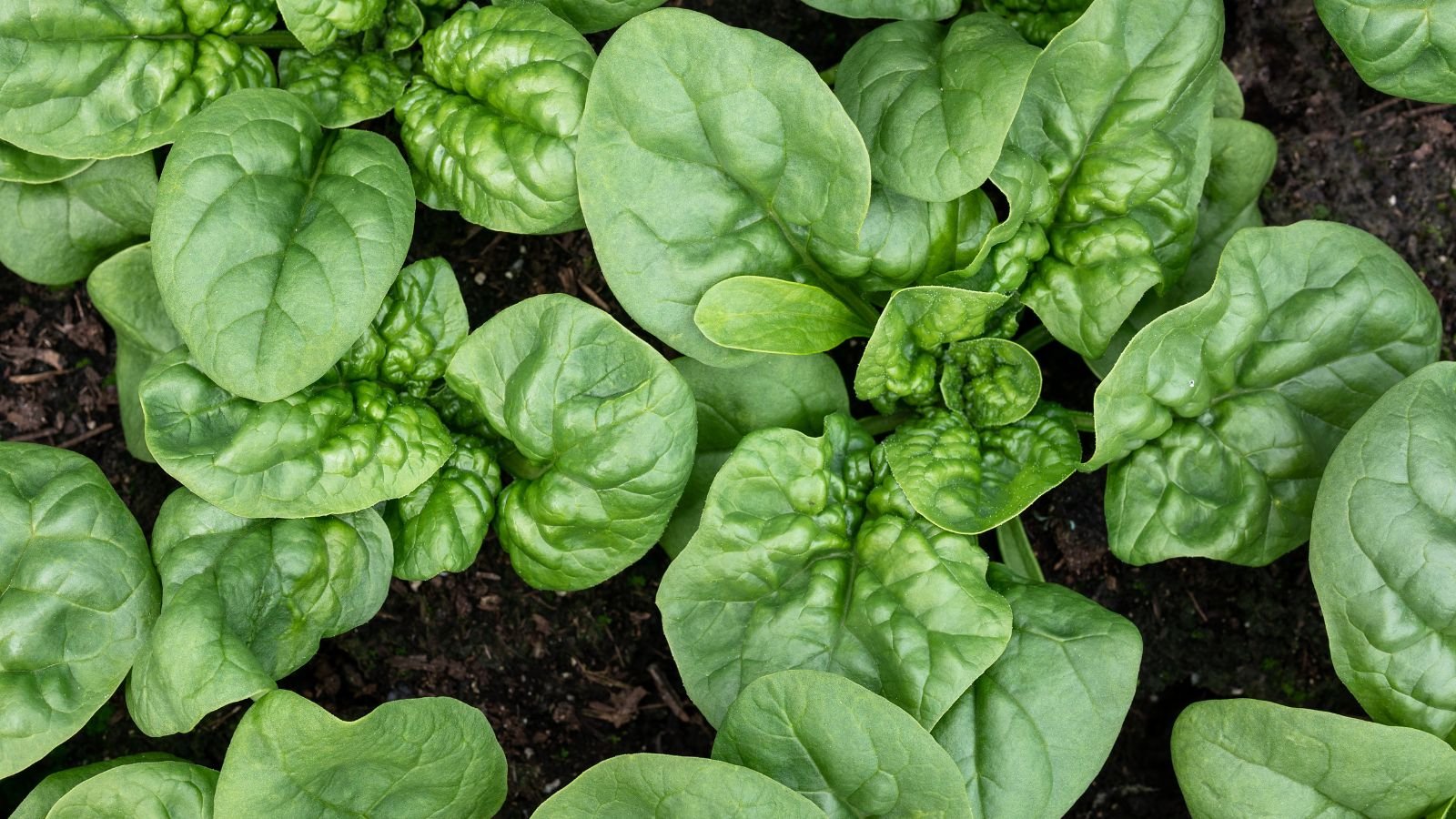 These greens are packed with nutrients.
These greens are packed with nutrients. Spinach is incredibly nutrient-dense and makes a great addition to the August survival garden. In cooler climates, August is a great time to start spinach. It grows quickly, and it also tastes sweeter after a frost, so you can continue to harvest it well into the fall.
In warm climates, hold off another month, then succession sow. You’ll have fresh, tender spinach through the winter months.
‘Bloomsdale’ is a long-standing heirloom variety that performs well in the fall. You can begin to harvest baby greens less than a month after planting. Allow it to mature for large, hearty leaves. This is great for containers and succession sowing.
Swiss Chard ‘Celebration’
 The stems add a pop of color to August survival gardens.
The stems add a pop of color to August survival gardens. Swiss chard is a great August survival garden crop. It’s durable, productive, and versatile, tolerating a wide range of conditions. It’s cold-tolerant and will overwinter in zones 7 and up.
In cooler climates, plant it now and begin harvesting in just under two months. It likes a frost or two to bring out the sweetness.
‘Celebration’ is a festive and beautiful variety that will brighten up the garden. Its bright green leaves have veins in shades of red, orange, yellow, and white. It grows well in containers, and while it doesn’t store for long, its cold tolerance makes it a good choice for mild climates to grow all winter.
Turnips ‘Purple Top White Globe’
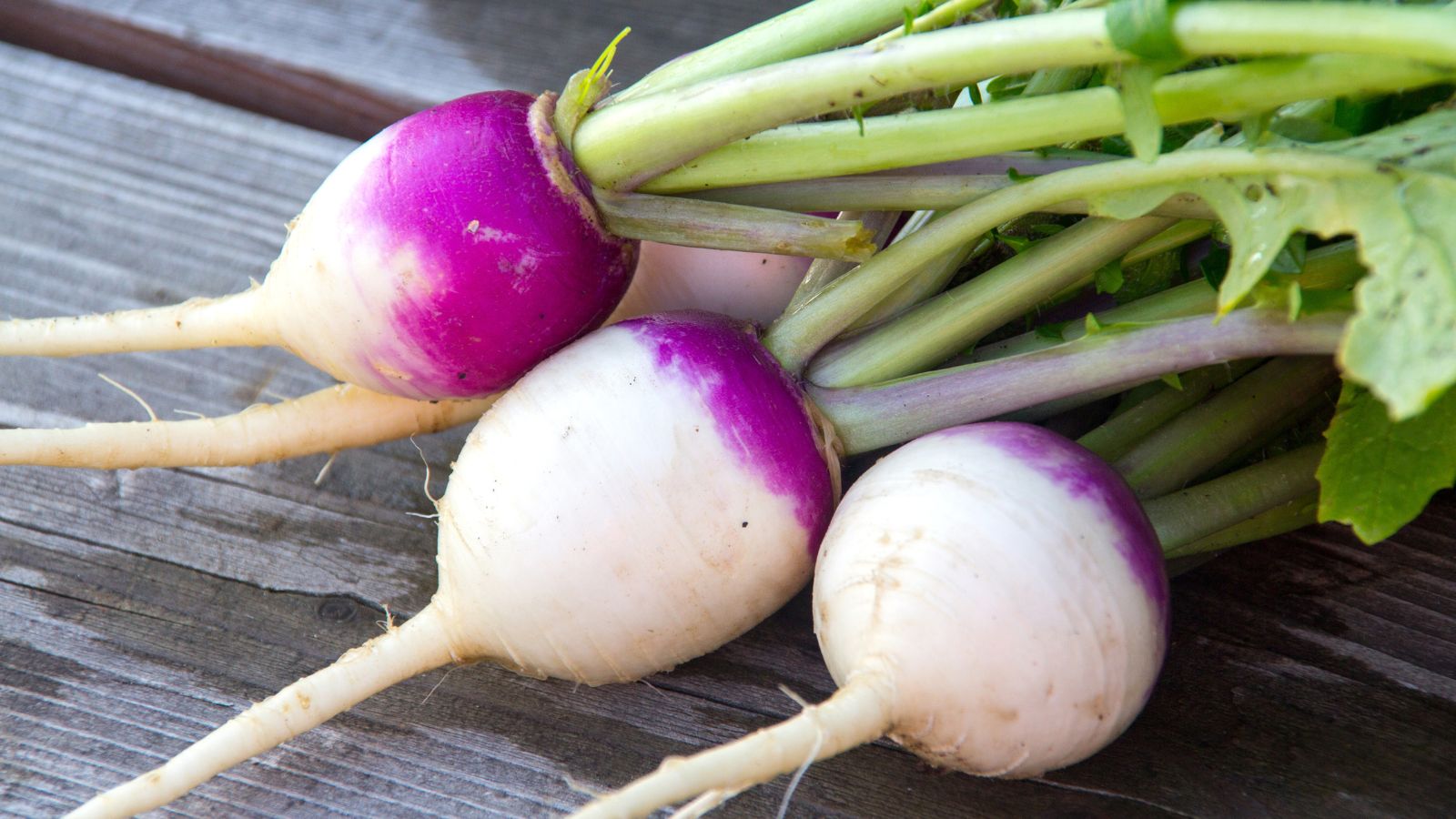 These underrated vegetables are worth growing.
These underrated vegetables are worth growing. Turnips are a nice dual-purpose crop with edible roots and nutritious greens. They are great for quick, convenient calories and essential nutrients. They are fast-growing and like cool temperatures, so they’re great for spring and fall. In cooler climates, you can plant these August survival garden crops for a harvest in less than two months.
‘Purple Top White Globe‘ turnips are a beautiful heirloom variety that stores excellently. If you have a root cellar, you can store them for several months. You can also blanch and freeze them. If you’ve never grown turnips and don’t know what to do with them, you can typically prepare them in the same way as a potato.
Cabbage ‘Copenhagen Market’
 This August survival crop appreciates cool temperatures.
This August survival crop appreciates cool temperatures. Cabbage is a cornerstone crop in the August survival garden. It’s hardy, nutrient-dense, and has excellent storage potential. In mild climates, you can grow cabbage all winter. In cool climates, it will thrive well into the fall and even winter months. Dense-headed varieties store for the longest.
‘Copenhagen Market‘ is compact and fast maturing, so it’s great for all survival gardens. They resist splitting, and you can store them for up to six months.
Cabbages are great for making fermented foods that last even longer. Make some sauerkraut or kimchi and store it for several months in the refrigerator. It’s great for your gut health.

Kale ‘Lacinato Dinosaur’
 Leaves are packed with essential nutrients.
Leaves are packed with essential nutrients. Kale is another essential survival garden crop that you can plant in August. It is incredibly resilient and survives in temperatures as low as 10°F. In fact, much like other leafy greens, a frost or two improves the flavor. It tolerates poor soil and has few needs.
‘Lacinato Dinosaur‘ kale tolerates warm weather excellently, so planting in August shouldn’t be an issue. This 18th-century heirloom is a gourmet dream. Tender baby greens are ready for harvest in as few as 21 days. Or, wait until mature to add substantial texture to delicious winter soups.
Broccoli ‘Waltham 29’
 Heads become sweeter after light frosts.
Heads become sweeter after light frosts. Broccoli is one of the more high-maintenance crops for the August survival garden. It requires significant space and more care than leafy greens. However, it has high nutritional value and is versatile in cooking. It’s always a favorite around my dinner table, so for me it’s essential.
‘Waltham 29‘ is an heirloom that dates back to Roman times. It matures in about 75 days, and continues to produce side shoots as long as the weather permits. Broccoli is frost-tolerant and even tastier after a light freeze of two. This is a compact plant, so it’s space-saving, which is an important factor in survival gardens.
Brussels Sprouts ‘Long Island Improved’
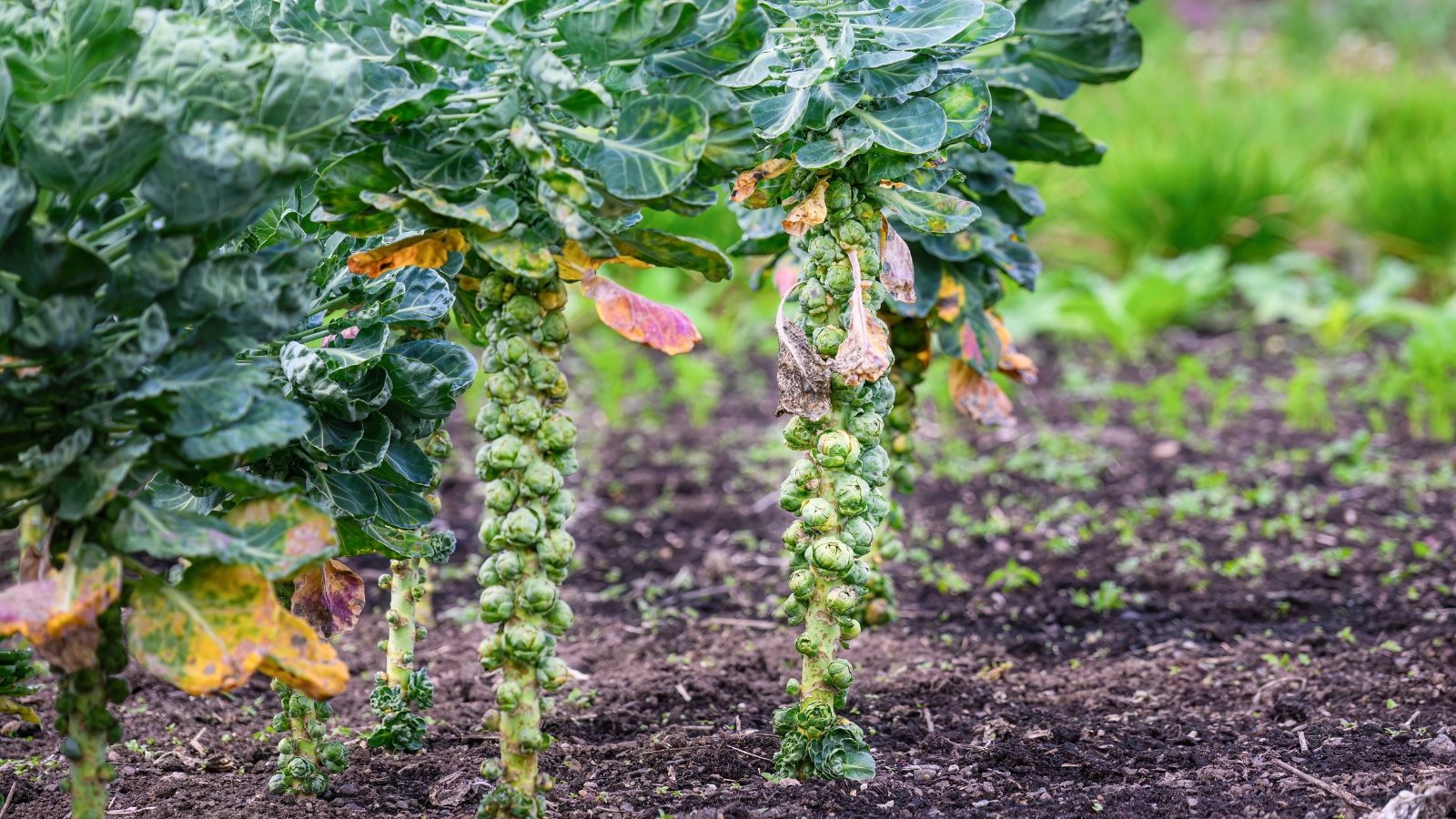 Start seeds indoors to avoid pest problems.
Start seeds indoors to avoid pest problems. Brussels sprouts are a great addition to the survival garden. By sowing seeds in August, you ensure plenty of time and cool temperatures for them to mature.
This is one of the most cold-tolerant crops you can grow. It will overwinter in warmer zones and will survive with protection in cooler ones. These plants have a long harvest window and a long storage life.
‘Long Island Improved‘ is an heirloom dating back to the 1890s. It’s tasty and versatile, and often in demand among top chefs. It’s a good idea to start these indoors to avoid having your young plants devoured by late summer pests. Transplant about 12 weeks ahead of your first anticipated frost date.
Carrots ‘Red Cored Chatenay’
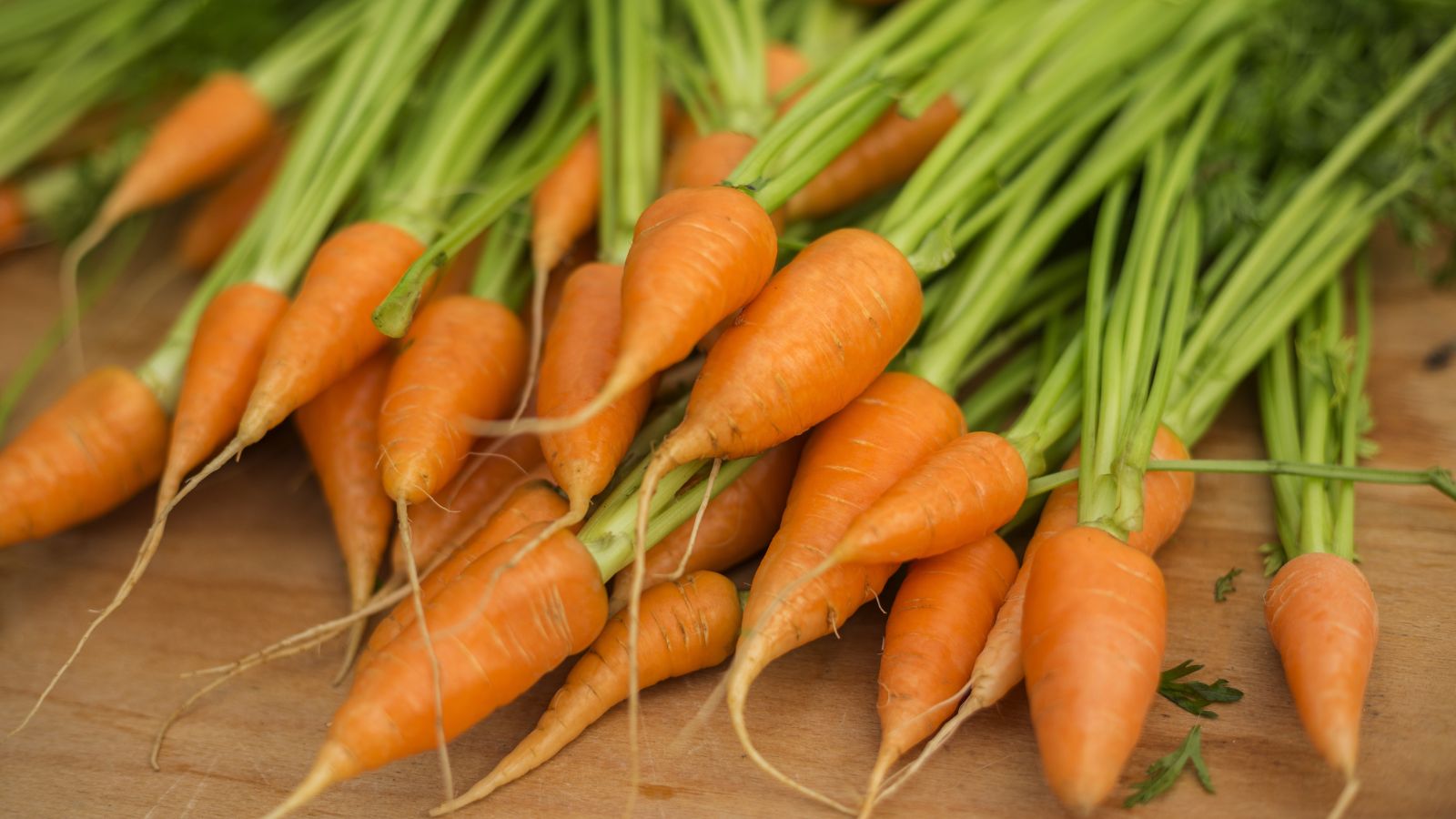 These adorable carrots are delicious and nutritious.
These adorable carrots are delicious and nutritious. Carrots are the natural candy of the survival garden, and August is a good time for planting them. They are nutrient-dense and easy to store. You can keep them in a root cellar or cool basement for up to five months. They produce a significant yield in a small space, grow well in cool weather, and you can leave them in the ground for storage.
‘Red Cored Chantenay‘ carrots are a stunning heirloom dating back to the 1800s in France. The roots are thick and blunt, so they’re suitable for heavier soil types. They mature in 65-70 days, but you can leave them in the ground longer and harvest as desired. There are a multitude of ways to store carrots for later use.
Beets ‘Early Wonder’
 Roots are ready to harvest in six weeks.
Roots are ready to harvest in six weeks. Beets are another great August survival garden crop. They don’t require much space, mature quickly, and are easy to store for long periods.
With earthy, nutritious roots and crisp, tasty greens, this is a nice dual-purpose vegetable. You can pickle, can, or freeze the roots, or store them for up to five months in a root cellar.
‘Early Wonder‘ is an heirloom variety that is great for mild climates, so it will survive August in warmer places. It’s also frost-tolerant, so it’s suitable for cooler climates. Plant these now for tasty beets in about six weeks. Succession sow for an ongoing harvest!
Parsnips ‘All-American’
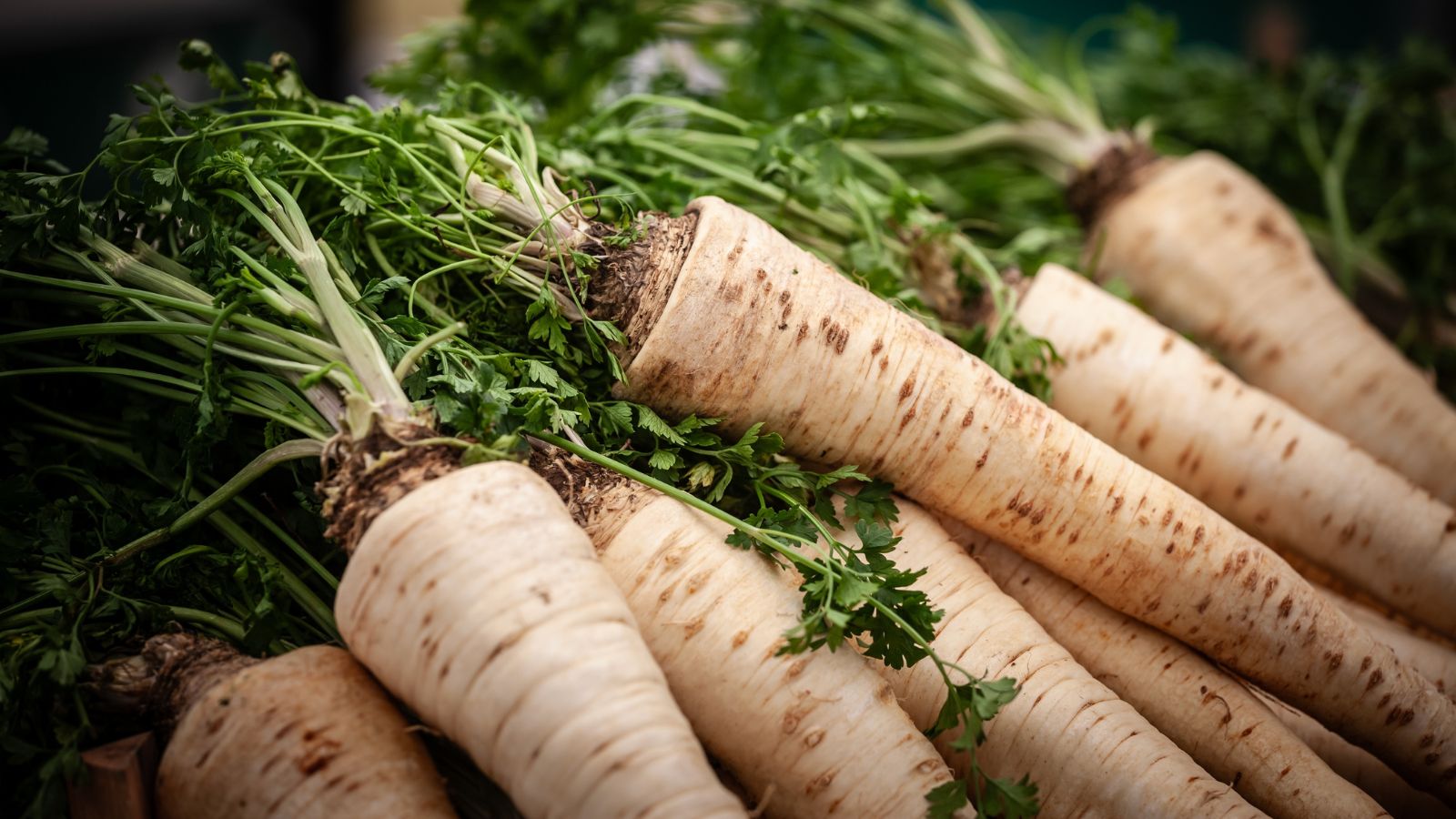 These slow growers need time to mature.
These slow growers need time to mature. Parsnips are slow growers with excellent cold tolerance, and they are perfect for planting in your survival garden. Even for cold climates, planting in August is perfectly fine. They survive deep freezes, and you can leave them in the ground until you’re ready to eat them. There’s no need for additional storage.
‘All-American‘ parsnips have a faster maturation rate. They are ready to harvest in about three and a half months. Their tender roots are sweet and nutritious. They’re delicious in soups, stews, and a host of other preparations. Cold temperatures make them sweeter.
Rutabagas ‘American Purple Top’
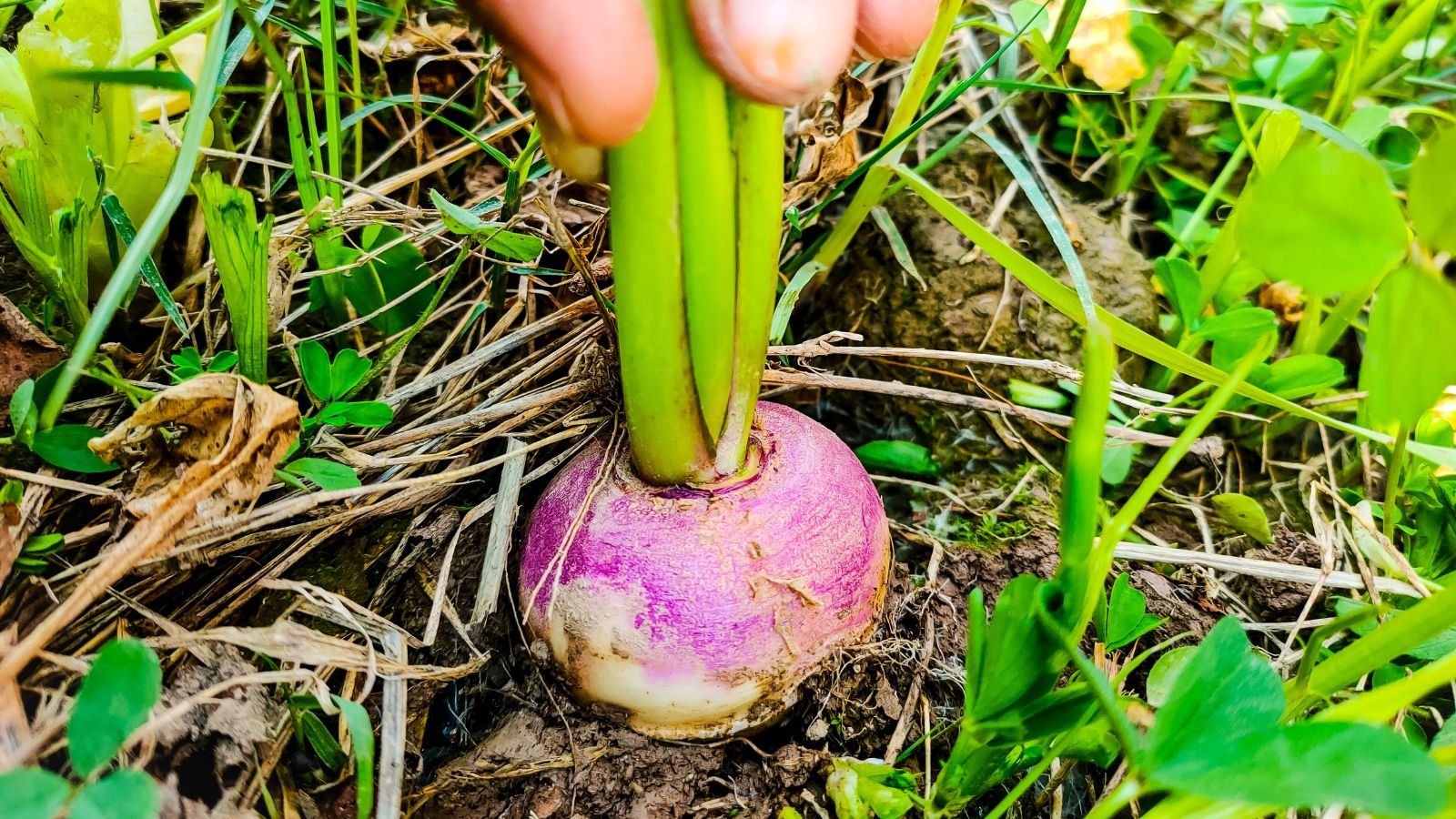 These root crops last long in storage.
These root crops last long in storage. Rutabagas are a top survival garden vegetable that you can plant in August. In warmer climates, you could wait another month, but in cooler climates, it’s time to get rolling. The roots are a great source of carbohydrates and fiber, and the greens are tasty and nutrient-rich.
‘American Purple Top‘ is an heirloom with firm, sweet roots. You can mash them, add them to stews and soups, and saute the greens. These take a while to mature, up to five months. They are highly cold-tolerant and store for four months or more in a root cellar. In warmer climates, you can overwinter these.
Potatoes ‘Clancy’
 The Clancy potato variety requires indoor seeding before transplanting.
The Clancy potato variety requires indoor seeding before transplanting.In milder climates, potatoes are an excellent crop to plant in your survival garden in August. Potatoes need three to four months of frost-free weather to mature. The green tops are not frost-tolerant, and they need those for photosynthesis.
Nonetheless, in zones 7 and higher, August is a fine planting time for potatoes, particularly smaller cultivars. ‘Clancy‘ is a tasty red variety with a creamy yellow flesh. It’s a 2019 All-America Selections winner. It matures in as few as 85 days, and you can harvest as soon as the flowers bloom.
Winter Squash ‘Table King’
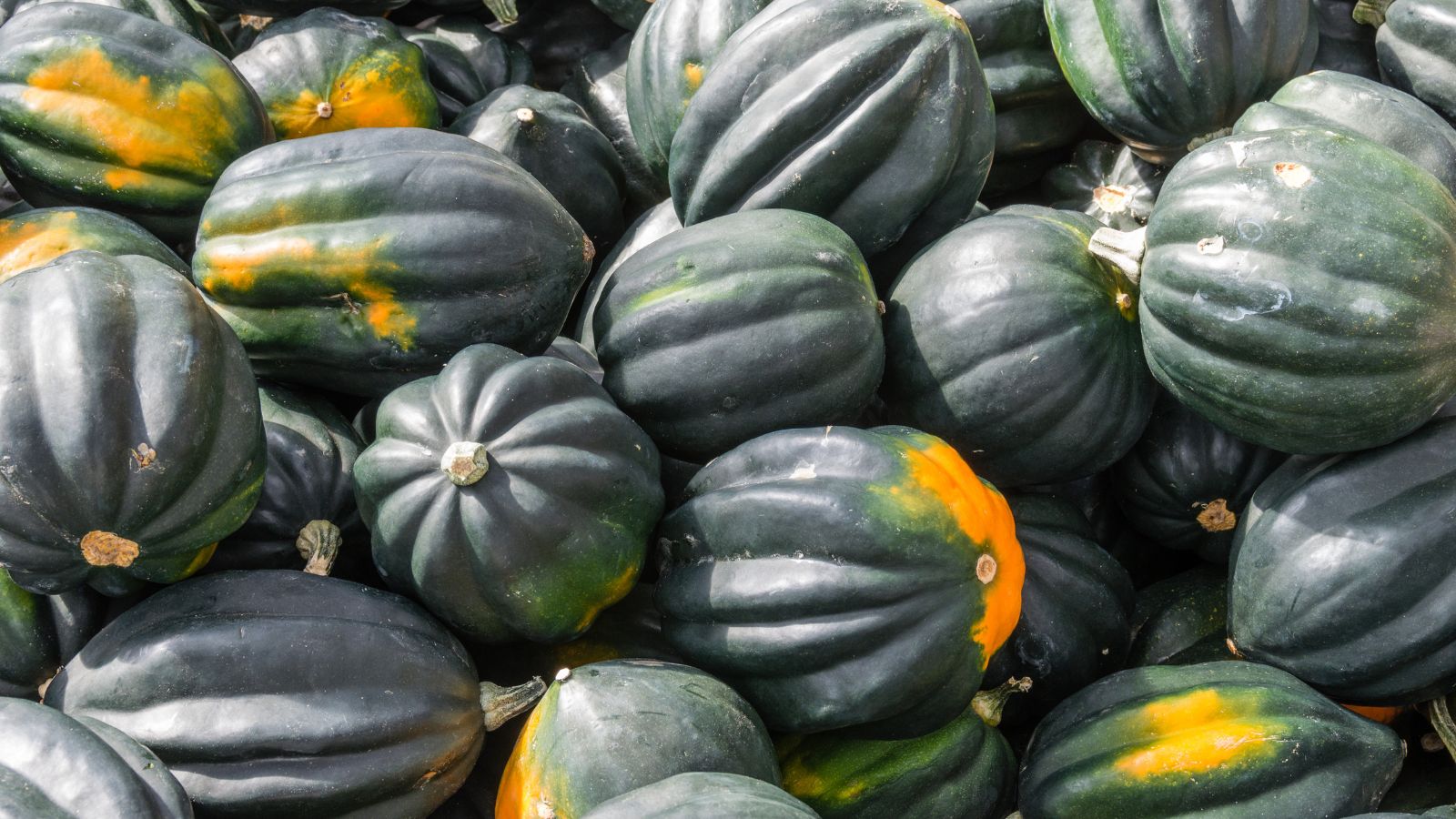 This type matures quicker than others.
This type matures quicker than others. Winter squash is tricky as a fall crop, but some types mature fast enough, especially in warmer climates. They are a powerhouse in the survival garden with their long storage life and versatility. They are calorie and nutrient-dense, and offer a high yield.
‘Table King‘ is a winter acorn squash variety that has a rich, sweet flavor. The vines are compact, so they don’t require a ton of space. They are an All-America Selections winner and are exceptionally easy to grow.


 2 days ago
12
2 days ago
12
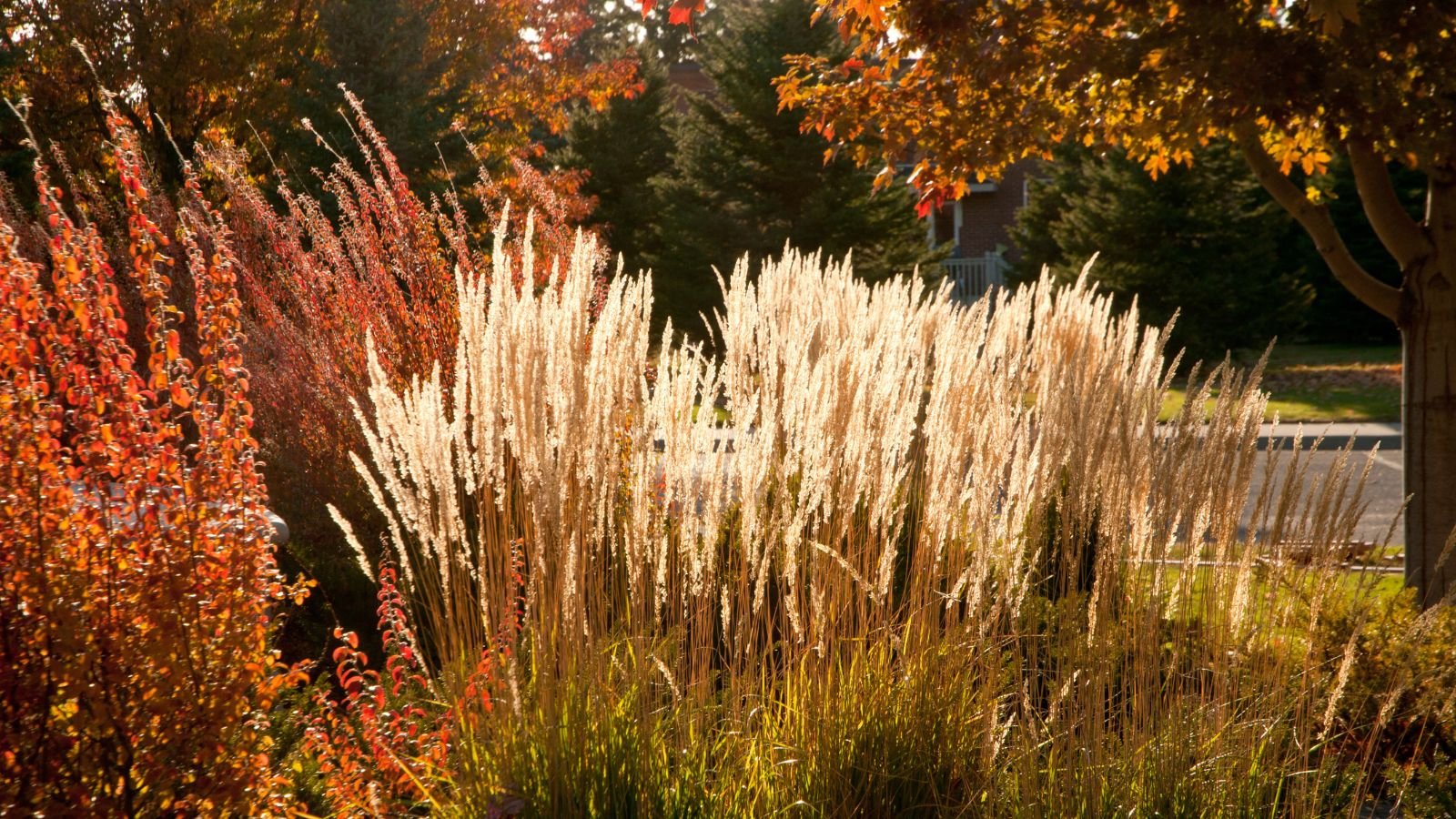



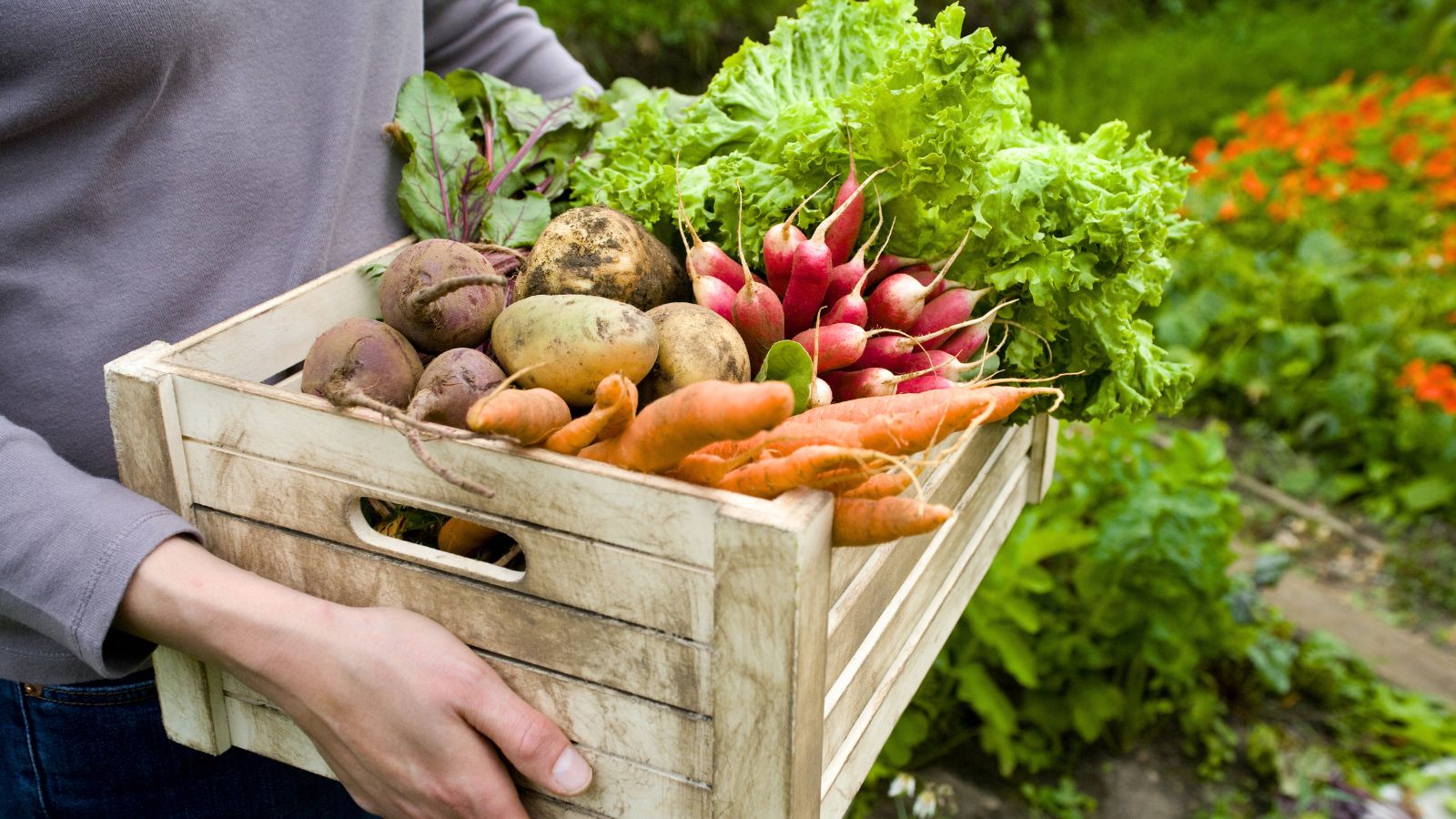
















 English (US) ·
English (US) ·  French (CA) ·
French (CA) ·